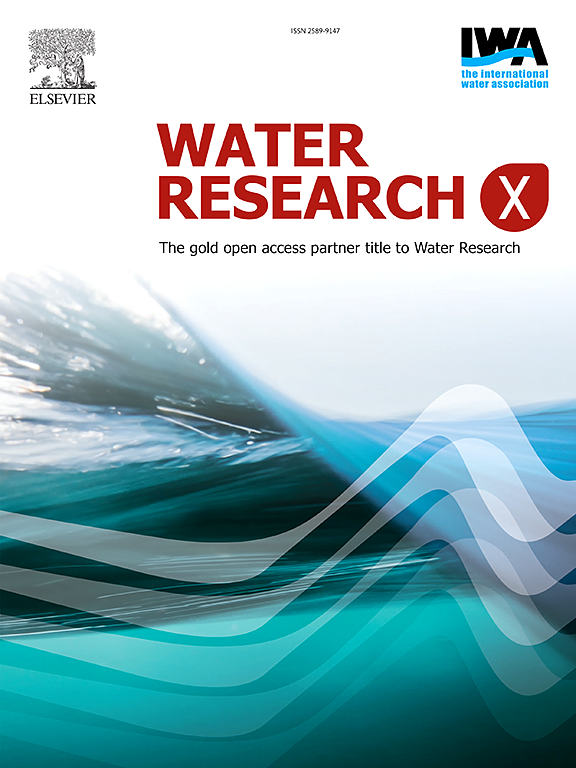用于下水道流量监测的低成本、数据高效、设备软传感器——从相邻的水位传感器中学习
IF 8.2
2区 环境科学与生态学
Q1 ENGINEERING, ENVIRONMENTAL
引用次数: 0
摘要
流量测量对于下水道监测至关重要,但由于传感器成本高且传感器维护频繁,使用流量计进行直接测量通常非常昂贵。从水深测量中获得流量的软传感器是一种更具成本效益的方法;然而,这种传感器的训练仍然需要大量的直接流量测量。在本文中,我们提出了基于两个相邻人孔的水深测量的设备上软流量传感器,而不是单个人孔,以减少对训练流量数据的需求。三种模型结构,即Saint-Venant方程(SVE),多层感知器(MLP)和物理信息神经网络(PINN),用于实现两个现实管道和一个模拟管道的软传感器。在所有情况下,基于SVE和mlp的软传感器以低计算负荷可靠地估计流量,可以在为水位传感器供电的树莓派5上实现。相比之下,基于pup的软传感器由于计算量大而失败。基于sve的传感器需要更少的流量数据进行训练,而基于mlp的软传感器提供更准确的流量估计,但需要更多的流量数据。这两种传感器都能抵抗与水深和流量测量相关的噪声和偏差,适用于实际应用。当流量数据稀缺时,基于sve的传感器是首选。本文章由计算机程序翻译,如有差异,请以英文原文为准。

Low-cost, data-efficient, on-device soft sensors for sewer flow monitoring—learning from adjacent water level sensors
Flow measurements are critical for sewer monitoring, but direct measurements with flow meters are often expensive due to high sensor costs and frequent sensor maintenance. Soft sensors that derive flow rates from water depth measurements are a more cost-effective approach; however, the training of such sensors still requires extensive direct flow measurements. In this paper, we propose on-device soft flow sensors based on water depth measurements at two adjacent manholes, rather than a single manhole, to reduce the demand for flow data for training. Three model structures, namely the Saint-Venant equations (SVE), a multilayer perceptron (MLP), and a physics-informed neural network (PINN), are used to implement soft sensors for two real-life pipes and one simulated pipe. In all cases, the SVE- and MLP-based soft sensors reliably estimate flow rates with a low computational load that can be implemented on a Raspberry Pi 5 that powers a water level sensor. In contrast, the PINN-based soft sensor failed due to its high computational demand. The SVE-based sensor requires much less flow data for training, while the MLP-based soft sensor delivers more accurate flow estimates but requires more flow data. Both sensors are robust against noise and bias associated with the water depth and flow rate measurements, suitable for real-life applications. The SVE-based sensor is preferrable when scarce flow data are available.
求助全文
通过发布文献求助,成功后即可免费获取论文全文。
去求助
来源期刊

Water Research X
Environmental Science-Water Science and Technology
CiteScore
12.30
自引率
1.30%
发文量
19
期刊介绍:
Water Research X is a sister journal of Water Research, which follows a Gold Open Access model. It focuses on publishing concise, letter-style research papers, visionary perspectives and editorials, as well as mini-reviews on emerging topics. The Journal invites contributions from researchers worldwide on various aspects of the science and technology related to the human impact on the water cycle, water quality, and its global management.
 求助内容:
求助内容: 应助结果提醒方式:
应助结果提醒方式:


